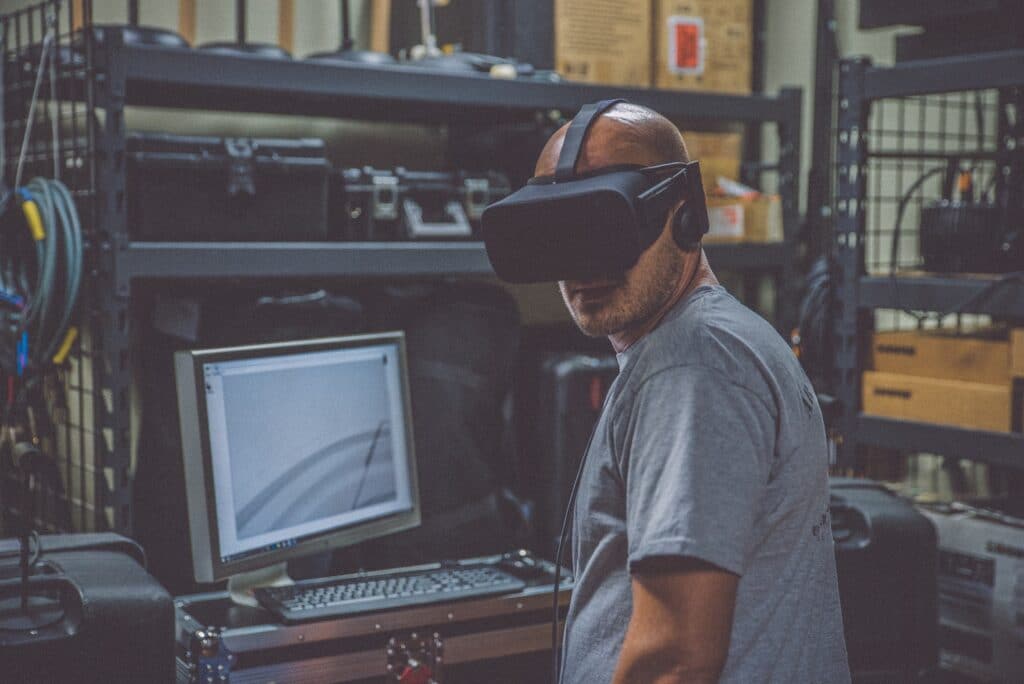
Augmented Reality in the Industry 4.0
Technology
Posted 13 Dec 2018
Some people will certainly remember the hype of “Pokémon Go” in the summer of 2016. Virtual Pokémon could be found and captured in the real environment of the players. However, this technology is not only interesting in the gaming sector. In contrast to Virtual Reality, Augmented Reality (AR) not only simulates reality but also expands it with the help of special glasses or apps.
In companies and factories, it offers great potential in the areas of repair, safety and maintenance. By linking real-world objects with virtual information through AR, the entire value chain can be optimized. For example, during a repair, a factory employee receives useful hints or even complete instructions on how to proceed. Repair procedures, as well as regular inspections, become more efficient. Accuracy during work can reduce the need for additional reworking. AR-supported operations are characterized by quality and accuracy.
But not only time is saved. Through the use of Augmented Reality in the industry, costs are also considerably saved. Remote maintenance can be carried out by a service technician who is virtually connected. No external technician is needed. This saves travel costs and time, and problems can be solved more quickly. By using special AR glasses, the employee can call up checklists, construction plans or operating instructions for machines. By using AR glasses, he has both hands free for the work process. The necessary work steps, as well as computer-generated information, are displayed in the field of vision, via videos or pictures. In addition, other colleagues can be connected to work together on a machine, because all relevant information about the machine is bundled and can be called up from anywhere. AR, therefore, makes expert knowledge easy and accessible to everyone. This is also a way of compensating for the shortage of skilled workers: AR enables even employees who do not have experts to carry out repairs and inspections.
But not all that glitters is gold – consequently, there are also some disadvantages with Augmented Reality: Virtual Reality glasses, such as Microsoft’s HoloLens, can only be controlled by gestures. Eye-tracking would be useful in order to fully exploit the potential of the technology. In addition, AR or VR glasses can only be worn by one person at a time – so several people cannot use one device at the same time. For this reason, more and more checklists switching to AR apps on tablets and smartphones with high-resolution cameras in order to allow more employees to participate in the process. There is also skepticism because the antennas of the glasses are close to the head -keyword radiation – and heat sources can also occur. One solution would be to develop mobile clients. , as well as computer-generated information, the implementation of AR in factories initially incurs high costs, for example for technology and IT. The effort is enormous at the beginning, because AR programs have to be individually adapted to the requirements of the company.
A first assistance can be provided by AcRoSS with the AR-based product Service Systems. Supported by the “Smart Service World” technology program of the Federal Ministry of Economics and Energy, a platform is to be developed that provides reusable AR modules. Via this platform, all necessary data can be retrieved, exchanged and networked between the AR devices, systems and softwares.
Another interesting development is Cognitive AR. It is a learning principle in which artificial intelligence methods into the AR concept. When a technician performs a work step, software and AI analyze these work steps and automatically create animations with the special glasses, which can then be retrieved by other employees.
In summary, Augmented Reality offers the following advantages for both companies and employees. Augmented Reality:
In people will blog entry we already asked ourselves the question whether virtual Reality is just a momentary hype or has potential for the future. This question also arises with Augmented Reality. It should be noted, however, that this development remains exciting not only in gaming, but also in industry. To what extent will classic industry and state-of-the-art special glasses merge in the future?
– For questions and suggestions please contact HBI
SOURCE: A&D Automation & Digitization 9/2018 Page 20-35